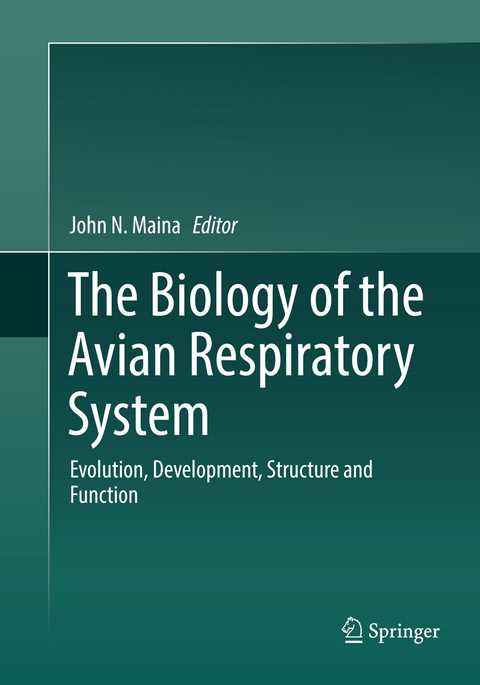
The Biology of the Avian Respiratory System
Springer International Publishing (Verlag)
978-3-319-82997-5 (ISBN)
The central focus of this book is the avian respiratory system. The authors explain why the respiratory system of modern birds is built the way it is and works the way that it does. Birds have been and continue to attract particular interest to biologists. The more birds are studied, the more it is appreciated that the existence of human-kind on earth very much depends directly and indirectly on the existence of birds. Regarding the avian respiratory system, published works are scattered in biological journals of fields like physiology, behavior, anatomy/morphology and ecology while others appear in as far afield as paleontology and geology. The contributors to this book are world-renowned experts in their various fields of study. Special attention is given to the evolution, the structure, the function and the development of the lung-air sac system. Readers will not only discover the origin of birds but will also learn how the respiratory system of theropod dinosaursworked and may have transformed into the avian one. In addition, the work explores such aspects as swallowing mechanism in birds, the adaptations that have evolved for flight at extreme altitude and gas exchange in eggs. It is a highly informative and carefully presented work that provides cutting edge scientific insights for readers with an interest in the respiratory biology and the evolution of birds.
John N. Maina served as a professor of veterinary anatomy for 17 years at the University of Nairobi (Kenya) and of human anatomy for 13 years at the University of the Witwatersrand (South Africa). He currently works as a research professor at the University of Johannesburg. He has been investigating the structure of the avian respiratory system for nearly four decades and published 150 papers in peer reviewed journals, 12 book chapters and 5 books on the comparative functional design of the gas exchangers. He has collaborated with others both nationally and internationally, held appointments in various academic institutions and has been invited to give lectures at different meetings/conferences and academic institutions. He has lectured in courses pertaining to the structure and function of the animal and the human bodies.
The Evolution of Birds with Implications from new Fossil Evidences.- The Avian Lingual and Laryngeal Apparatus within the Jaw Apparatus and in Comparison with the Mammalian Condition: Functional Morphology and Biomechanics of Evaporative Cooling, Feeding, Drinking, and Vocalization.- Pulmonary Transformations of Vertebrates.- Flying High: The Unique Physiology of Birds that Fly at High Altitudes.- Molecular Aspects of Avian Lung Development.- Development of the Airways and the Vasculature in the Lungs of Birds.- Structure and Function of Avian Pulmonary Capillaries: Comparison with Mammals.- Functional Design of the Mature Avian respiratory System.- Structure and Function of the Shell and the Chorioallantoic Membrane of the Avian Egg: Embryonic Respiration.
| Erscheinungsdatum | 05.03.2022 |
|---|---|
| Zusatzinfo | XVIII, 250 p. 132 illus., 102 illus. in color. |
| Verlagsort | Cham |
| Sprache | englisch |
| Maße | 178 x 254 mm |
| Gewicht | 700 g |
| Themenwelt | Naturwissenschaften ► Biologie ► Evolution |
| Naturwissenschaften ► Biologie ► Genetik / Molekularbiologie | |
| Naturwissenschaften ► Biologie ► Zoologie | |
| Schlagworte | Air sacs in theropod dinosaurs • airways and vasculature in the lungs of birds • avian breathing mechanism • Avian Lung Evolution • avian pulmonary circulation • avian respiratory system • development of the avian lung and air sacs |
| ISBN-10 | 3-319-82997-1 / 3319829971 |
| ISBN-13 | 978-3-319-82997-5 / 9783319829975 |
| Zustand | Neuware |
| Haben Sie eine Frage zum Produkt? |
aus dem Bereich


